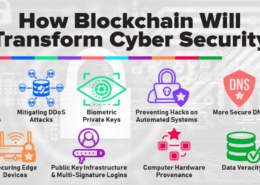Developing a data backup and disaster recovery plan involves several key considerations: Identify Critical Data and Systems: Determine which data and systems are essential for your operations. Prioritize these for backup and quick recovery. Backup Frequency and Methods: Decide how often to back up dRead more
Developing a data backup and disaster recovery plan involves several key considerations:
- Identify Critical Data and Systems:
- Determine which data and systems are essential for your operations. Prioritize these for backup and quick recovery.
- Backup Frequency and Methods:
- Decide how often to back up data (daily, weekly, etc.) based on the frequency of data changes.
- Choose backup methods such as full, incremental, or differential backups.
- Storage Solutions:
- Use multiple storage solutions, including on-site, off-site, and cloud storage, to ensure redundancy.
- Ensure backups are encrypted to protect sensitive data.
- Automated Backups:
- Implement automated backup processes to reduce the risk of human error and ensure consistent backups.
- Disaster Recovery Objectives:
- Establish Recovery Time Objectives (RTO) and Recovery Point Objectives (RPO) to define acceptable downtime and data loss limits.
- Regular Testing:
- Regularly test backup and recovery procedures to ensure they work effectively and meet RTO and RPO goals.
- Data Integrity:
- Verify the integrity of backups by periodically restoring data and checking for completeness and accuracy.
- Documentation:
- Maintain comprehensive documentation of backup and recovery procedures, including roles and responsibilities.
- Access Controls:
- Implement strict access controls to ensure only authorized personnel can perform backup and recovery operations.
- Regulatory Compliance:
- Ensure your backup and disaster recovery plans comply with relevant regulations and industry standards.
- Continuous Monitoring and Updates:
- Continuously monitor the backup process and update the disaster recovery plan to adapt to new threats and changes in your IT environment.
By addressing these considerations, you can develop a robust data backup and disaster recovery plan to protect your organization’s critical information and ensure business continuity.
See less

Several AI technologies significantly enhance cybersecurity measures in the IT industry: Machine Learning (ML): ML algorithms analyze patterns and detect anomalies, improving threat detection and response times. They can identify malicious activities by learning from historical data. Natural LanguagRead more
Several AI technologies significantly enhance cybersecurity measures in the IT industry:
These technologies bolster defenses, enhance threat detection, and streamline response efforts in cybersecurity.
See less